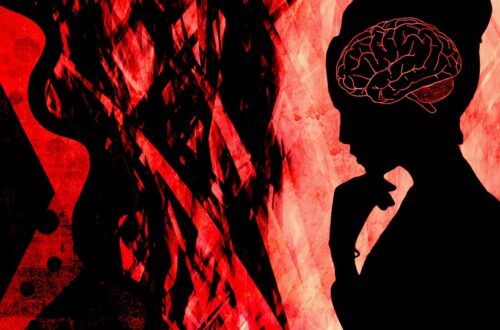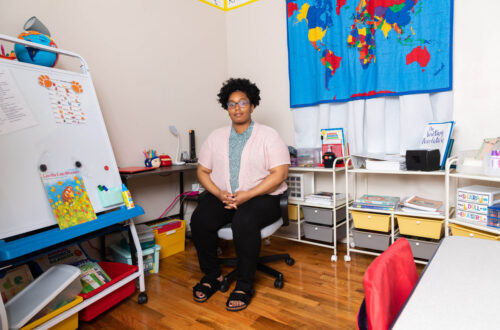Covid stole my Dad’s final months
OPINION: Because of the pandemic, I couldn’t visit him in his nursing home, and because of his dementia he couldn’t understand why. Mismanagement of this crisis has failed the elderly and caused incalculable hurt.
By Alison McCook 11.09.2020
On September 16, my father died.
He lived the last six months of his life entirely cut off from his family and friends. That’s because he was one of the 1.3 million people living in nursing homes across the country.
He didn’t have Covid-19, but even though the disease didn’t take his life, it took his time. It took his last months away from him, during which he couldn’t enjoy the relationships he’d spent his life building. And research suggests this isolation might have hastened his decline.
So I’m sad, and angry. And I know I’m not alone. I am one of the many, many Americans trapped in a spiral of grief/rage over what our elderly loved ones have already lost because of the pandemic, and its ongoing mismanagement. After the United States finished last week charting its worst day yet for COVID cases, with no end in sight, some people are wondering when they’ll be able to reconnect with their parent, sister or spouse. For others, like me, that time never came.
My dad was 77, and had been living with dementia for years. He was a widower and I am an only child, so as his caregiver, I paid his bills, took him to more doctor’s appointments than I can count, and untangled any messes his mind made — I canceled credit cards, reinstated lapsed insurance policies, taped instructions to the remote control. And I answered his many, many questions. One in particular: “When are you coming to see me?” If I was already there, he would ask when I was coming back.
So I came, as often as I could. First to the old stone house he had shared with my mother, which started to crumble around him due to neglect, then to a continuing-care facility in Philadelphia, where he eventually moved to skilled nursing. Several times a week, I brought him a chocolate-frosted doughnut and Diet Coke, held his hand, and put on an old Western. Even when he could no longer talk, I knew the question. So every time I left, I promised him: I’ll be back soon, Dad.
On March 6, his facility called to say they had closed the doors to all visitors due to Covid-19. My stomach was in knots, but there was simply nothing I could do. I got updates, such as after he lost 10 pounds, then 20, then 30. The day they began allowing in-person visits — with residents and visitors on either side of the locked front door in the lobby — I signed up. But Dad didn’t like leaving his room, so he spent the entire visit screaming at everyone around him from his wheelchair, drowning out my muffled voice on the other side of the glass, begging him to understand that this was the best we could do. His nurse cried, watching us.
So I stuck with weekly video chats on tablets, as the time stretched to months. I never knew what he could see or hear, and he didn’t say much at all, but I chattered endlessly to fill the time, promising to once again bring him doughnuts and Diet Coke, and to hold his hand. A few months ago, I asked if he would like that. “Very,” he told me. It was one of the last words I heard him say.
On the night of September 15, his night nurse called to say he was actively dying. Suddenly, I could come right away. I used the employee entrance, wrapped myself in protective gear from head to toe — hair cover, face mask, face shield, gown and booties — and, finally, walked into his room.
Having wondered for so long what it would be like to see him again, it was not what I expected. Dad wasn’t himself anymore, and I wasn’t me. At least, I wasn’t me to him. I talked to him, stroked his arm, held up old pictures, but he didn’t show any signs that he knew who I was, or even that I was there. He just lay still, fighting to breathe, his eyes half-closed and glassy. I had finally come to see him, but it was too late.
After more than six months apart, we had 10 hours together.
I know I have a lot to be grateful for. I was with him when he died. I had time to remind him about the good life he had lived.
But still, I am angry.
“I believe there must be a way to safely reconnect separated families.”
I’m angry that our country is failing at testing. When I broke the news to my 6-year-old daughter that her beloved grandfather had died, I couldn’t even hug her — simply because I didn’t have his Covid test result until a day later, two days after he had been tested.
What angers me most, though, are the months my dad and I were separated from each other. This might even be what killed him: Analyses from the UK and US have found a spike in deaths from dementia compared with previous years, and 79 percent of surveyed care homes in the UK said the lack of social contact was hurting the health of patients with dementia. This is not a surprise: Research has linked loneliness with faster cognitive decline.
I believe there must be a way to safely reconnect separated families. After long-term care facilities in the Netherlands opened their doors in May, a July study reported that in-person visits were a “huge added value” over video calls or window visits. Many states have begun to allow in-person visiting indoors; in Pennsylvania, where I live, facilities are supposed to follow a series of protocols before they can begin thinking about lifting restrictions, and at the time of my dad’s death, his facility hadn’t experienced enough case-free days in a row to start reopening. I knew he was getting excellent care, but I used to fantasize about a separate floor or unit in the facility for patients whose families have accepted the risk of Covid-19, where visitors wear masks, and staff receives hazard pay.
Yes, it’s a complicated problem with no easy fix. But as a grieving daughter, I know we haven’t tried hard enough. We have known about Covid-19 for almost a year now, and the end isn’t near: My region has recently seen a surge in cases, and experts say we have a long period — months, at least — of restrictions ahead. But many elderly can’t wait that long. We owe it to them — people in nursing homes and those sitting at home, alone — to figure out how to reconnect them with their loved ones in a meaningful way.


